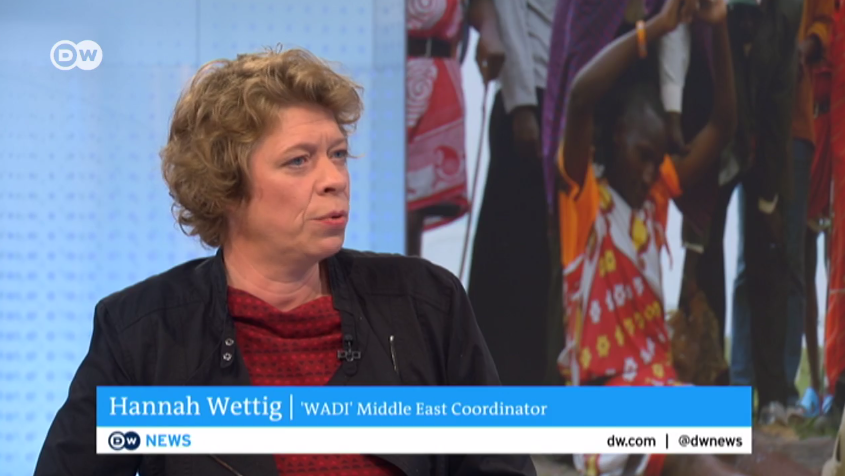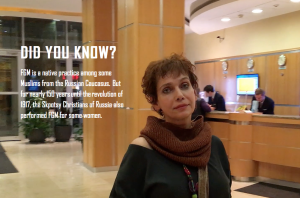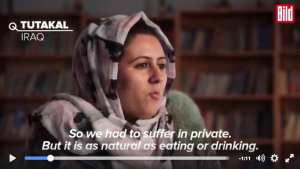Home » Posts tagged 'Iraq'
Tag Archives: Iraq
FGM Worldwide, It’s Worse Than You Think
25.11.2018. By Dr. John Chua
On the 15th of November, the UK Government hosted the world’s experts on Female Genital Mutilation at an international conference. The keynote speech by the UK’s Home Secretary suggests a celebratory tone in acknowledging the successful reduction of FGM in Africa. Indeed, the UK in 2013 made the most generous commitment ever by a single donor to end FGM, with a focus on Africa, resulting in the successes we see now. While commendable, the primary focus on Africa is not new and has meant many other countries are largely ignored.
In 2008, the UK Border Agency published a list of countries where females are at-risk of being subjected to FGM. With only African countries listed, this was for them an African issue. Migrants from these countries could be subjected to investigations or interrogations by officials regarding FGM.
Among many experts, the dominant theory suggests FGM came from Africa thousands of years ago, was later adopted by some Islamic sects and spreads around the world through migration. In Britain, thousands of FGM cases among migrants are recorded each year although there is yet no successful prosecution and conviction.
But the reality is FGM is not just an African problem. The country with the largest number of FGM survivors and at-risk girls is not even African. It is Indonesia, the world’s most populous Muslim country.
As someone who spent nearly a decade travelling worldwide to investigate and research FGM, the truth about this human rights abuse is worse than you might imagine. I’ve found FGM in the cartel land of Mexico, Russian Caucasus, Peruvian Amazon, war zones in Iraq, cosmopolitan Singapore, and even suburban America. FGM, done for different reasons in each place, is a native practice in every continent, except Antarctica.
My work on FGM began almost by accident when I went to Iraq to train journalists and found the NGO Wadi trying to document FGM exists in Iraqi Kurdistan. The West, then still associating FGM with Africa, was shocked to learn of this.
In Iraq, I partnered with Wadi, and produced a few investigative documentaries for The Guardian and BBC that exposed the extent of this problem in Kurdistan. To their credit, the activists at Wadi played a major role in getting FGM outlawed in Kurdistan, and within a few short years, the majority of Kurdish Iraqis turned against FGM.
In 2013, I thought my job was done. But through Wadi, I met other activists working to end FGM. At first, they were the ones in countries adjacent to Iraq, specifically Iran, Saudi Arabia and Oman. I started interviewing them and eventually, I went further afield, first to Malaysia, then the Pattani region in Thailand, and to Singapore. In all these places, FGM is a taboo subject but through sheer determination I was able to talk to cutters, survivors and activists. In Singapore, I surveyed 116 Muslim women and 86 of them were FGM survivors.
Although I am British, I was born in Singapore and to my dismay, people there I have known most of my life are impacted by FGM. I even recorded video of medical staff in Singapore offering to cut my nonexistent British daughter.
In fact, in many parts of the world, FGM is found in medical settings, with parents erroneously thinking it would be ‘safer’ if done in a clinic. Two years ago a teenage girl died after undergoing FGM in an Egyptian clinic.
In a special report, I met and interviewed a gynaecologist in Dagestan, Russia who truly believes in the medical ‘benefits’ of FGM. In Detroit last year, doctors belonging to the Dawoodi-Bohra Muslim sect were arrested for performing FGM.
But this isn’t new; there is a long history of doctors performing FGM. In the mid-1800s, some British doctors recommended cutting the clitoris to cure many sicknesses. Dr. Isaac Baker Brown, the president of the Medical Society of London, published his 1866 treatise On the Curability of Certain Forms of Insanity, Epilepsy, Catalepsy, and Hysteria in Females, prescribing clitoridectomy for a number of illnesses.
These ideas took hold in the United States for a number of decades, well into the twentieth century. While American families would generally not talk about female genital cutting and the exact number of such operations is unknown, there is ample evidence that some white Christian women were subjected to FGM.
For nearly a century, American medical texts and doctors taught female circumcision and clitoridectomy and Christian books make positive reference to the procedure as a cure for masturbation, even as late as the 1960s. One such book by a former dean of a medical school is still for sale on a church’s website.
I managed to track down a white Christian FGM survivor and convinced her to go public with her story. For many decades Dr. Rene Bergstrom kept her story a secret, afraid that publicising it would upset her family. (Her mother, concerned that she was masturbating, found a doctor to cut her when she was three.)
Together we released her story first at The Guardian and then later as the main subject in a short film, which won a prize on PBS’s To The Contrary and aired across the United States in late 2017. After the TV broadcast, a few white Christian FGM survivors contact us. Like Renee, all of them thought they were alone in having survived FGM, as they have never heard about it happening to any other white people they know.
In the Americas, FGM is not just in the United States. The Emberás of Panama and Colombia practice FGM. We would not have known about it had not the death of young girls from the cutting in 2007 caught the attention of the wider world.
As explained in an interview I conducted with an Emberá activist and with the UN in Colombia, they believed that cutting the clitoris would prevent it from becoming a penis. Furthermore, one prevailing theory is that African slaves bought the cutting tradition to the new world.
But I’m suspicious of this out-of-Africa theory and as I discovered, FGM is also found among many other tribes in Colombia. How could African slaves have influenced such a large area of the country? FGM is indigenous to South America and I found the proof in Amazonian Peru.
For centuries the Shipibo tribe had elaborate ceremonies celebrating the genital cutting of teenage girls. While these practices have stopped in recent years, the artefacts used for the cutting have been radiocarbon dated to a time before the arrival of Columbus. Meanwhile other South American tribes like the Secoya and Kaxinawá reportedly still practice FGM, and their remote locations make outreach and studies difficult.
Recently I have completed a feature length documentary by combining all the footage I have shot around the globe. But my research is incomplete; it will take many more people to comprehensively investigate and document FGM worldwide.
For example, I have heard a story that some Nahuas in Mexico cut the genitals of young girls. This remains to be proven. But in Juárez, Mexico for the last two decades, cartel serial killers kidnap young women and after sexual and genital mutilation, dump their bodies as a warning to others.
Hundreds if not thousands of women have been killed. Despite the arrests and convictions of the supposed killers, the femicide continues. On a recent visit to Juárez, I saw first hand how the missing women impact the psyche of the city.
After watching masked police officers patrol Juárez’s streets and seeing arrests on street corners in the ‘war on drugs’, I read that in many parts of Mexico, the authorities are accused of torturing arrested women with electric shocks to their genitals, which could cause burns which fit Type IV FGM. Clearly FGM is used to instil fear in the population.
Just a few years ago, FGM experts and friends felt my attempt to document FGM around the world was a fool’s errand. I can’t explain why I did it, as I never expected to come this far.
But I’ve learned this. While FGM is found across many ethnic groups and religions, with each assigning a different ‘reason’ for its practice, underneath their irrational explanations lie a universal mad urge to control the female body, sexuality and behaviour.
Formulating government policies to end FGM require knowledge of the facts and sadly, there is still so much the world doesn’t know about FGM. I suspect the UK will continue to focus primarily on ending FGM in Africa or where they might realistically achieve the best results. I simply can’t imagine the British Government stepping in to stop FGM in places like southern Iraq or even friendly countries such as Oman or Singapore.
But as I have also learned in northern Iraq, it takes individuals standing up to end this scourge. You could very well be situated close to someone affected by FGM. It takes all of us exposing FGM globally to end it.
Dr. John Chua’s feature film Cut: Exposing FGM Worldwide screens at Terre des Femmes Film Festival in Germany on 24th of November, ahead of its global release by Gravitas Ventures, the film distribution subsidiary of the German TV network ProSiebenSat.1.
Wadi talks on Deutsche Welle about FGM in Asia
27.8.2018 The German women’s rights organization Terre des Femmes just came out with new figures about female genital mutilation (FGM): More than 65.000 women and girls are cut in Germany, 12 percent more than the last estimate. This rise is mainly due to an influx of refugees from Somalia, Eritrea and Iraq in recent years. Deutsche Welle TV spoke with WADI on the news in it’s English and German program about FGM in Iraq and Asia. 
Day of Zero Tolerance to FGM: Progress in Asia
Press release by WADI / Stop FGM Middle East & Asia
February 6th 2017. On the seventh official International Day of Zero Tolerance to female genital mutilation (FGM), it has been 13 years, that WADI first brought the issue FGM happening in Asia, in this case Iraq, to the international agenda. In this last decade WADI’s campaign against FGM in Iraq has yielded great success as a recent study by the Heartland Alliance in cooperation with Unicef and the High Council of Women Affairs shows. The rates of FGM in Northern Iraq have decreased dramatically when comparing mothers and daughters. Among mothers surveyed 44,8% reported to be cut compared to 10,7% of their daughters. The success of a comprehensive campaign becomes even more evident when looking at the figures of regions where WADI’s campaign started and has been going on since more than ten years: In the region of Halabja only 1.1% of daughters are cut today in comparison to 40% of mothers. (more…)
Heartland study shows steep decline of FGM rates in Iraqi Kurdistan
10.1.2017. By Stop FGM Middle East.
A study by the Heartland Alliance in cooperation with Unicef and the High Council of Women Affairs shows a dramatic decrease in rates of female genital mutilation (FGM) in Northern Iraq when comparing mothers and daughters. Among mothers surveyed 44,8% reported to be cut compared to 10,7% of their daughters. Results also show a direct link between campaigning and decline of rates. Religion remains a major factor among those who continue the procedure on their children.
Now This: Up to 72% of Kurdish Women in Iraq suffer female genital mutilation
Up to 72% of Kurdish women in Iraq still suffer genital mutila…Female genital mutilation is still too common in too many places
Unicef: Abandoning female genital mutilation, one village at a time
MURTKA, Iraq, 26 January 2016 — They remembered the day they were cut as if it was yesterday. Most said it happened around the age of five or six. To them, it’s the day they lost their trust in the person who brought them into this world — their mothers. (more…)
Why is there little interest in FGM in Asia on the FFD conference in Addis?
15.7.2015. By Hannah Wettig
Thanks to Orchid Project I was able to present the campaign against Female Genital Mutilation (FGM) in Iraqi Kurdistan and Asia at the side event of the conference on Financing for Development (FFD) in Addis Ababa. The panel on “Ending Female Genital Cutting” on Monday morning brought together people of quite different experiences. While Sister Fa reported how she supports education about FGM in her home country Senegal with money she collects herself, Domtila Chesang spoke about the village where she is from in Kenia. She decided to become an Anti-FGM activist when she saw the mutilation of her cousin and was terrified. Without support of her family she was still able to get an education at a near-by boarding school and is now happy to be supported by a broad coalition against FGM in Africa. This broad coalition was represented by Susan Bissell from Unicef who was proud to talk about the successes in Africa in the last couple years. David Hallam, director for international relations at the U.K. Department for International Development (DFID) said he wished they weren’t the biggest donor, because others should invest lots too, but he also mentioned Norway’s large investment.
Weekly Standard: Confronting FGM in Iran and Iraqi Kurdistan
17.6.2015. By Irfan Al-Alawi and Stephen Schwartz. Female genital mutilation or cutting (FGM/C) exists in the Islamic Republic of Iran even while the redoubt of clerical dictatorship is absent from a recent survey of FGM in 29 countries, published by UNICEF. The UN agency examined states in Africa and the Middle East. The UNICEF document did not specify them in full, but named eleven. Four – Djibouti, Egypt. Guinea, and Somalia – are Muslim, and feature “universal” incidence of FGM, or a rate above 90 percent of all women. (more…)
Emirates Women: FGM In The Middle East | Investigating Cutting Customs
28.4.2015. By Lindsey Stevens
Emirates Woman investigates the culturally sensitive issue of female genital mutilation, and asks what is being done to put an end to this practice in the Middle East.
The preparations have been made. In a makeshift clinic in an old school hall, tables dressed with sheets and pillows serve as hospital beds. This isn’t a blood donation centre, or the latest round of vaccinations for schoolchildren. It’s a clinic in Indonesia where girls are taken to be circumcised. The coming-of-age practice is performed in many countries across the world. For some, it’s perceived as tradition, for others beautification, and many believe it’s intertwined with religious beliefs. According to official bodies such as the United Nations and the World Health Organisation, it’s a human rights violation broadly described as female genital mutilation (FGM), or cutting. (more…)
Al Monitor: KRG looks to enhance protection of women, children
20.4.2015. by Mohammed Salih
ERBIL — Activists and government agencies in Iraqi Kurdistan have drafted amendments over the past few months to the autonomous region’s existing law combating domestic violence, introducing measures aimed at better protection of women’s and children’s rights. (more…)







